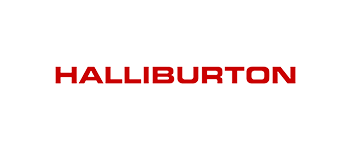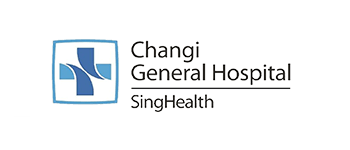
Hospitals are busy centres where patients are treated, medical professionals attend to various cases and administrative staff manage a variety of tasks. In this dynamic environment, effective management of patient queues has become a critical challenge. Long wait times and inefficient resource allocation are common issues that can negatively impact the patient experience and the overall operational efficiency of hospitals. Recognizing these challenges, hospitals are increasingly turning to queue management system as a strategic solution to revolutionise the way patient flows are managed. This system records the movement of patients through various stages of their healthcare journey and sends a notification when their turn arrives.
In this blog, we will explore the challenges of managing the patient flow and find a solution to these concerns. Let’s start!
Challenges Faced By Hospitals While Managing Patient Flow
Hospitals face various difficulties in handling the flow of patients, and these challenges can adversely affect the efficiency of the healthcare system as well as the overall experience for patients. Following are some common issues listed:
Overcrowding
Hospitals often face the problem of overcrowding in the waiting area, as an emergency can occur at any point in time. This overcrowding can result from inefficient resource and staff management, among other factors. Thus, this leads to longer waiting times and increased stress for patients as well as facility staff members.
Resource Allocation
Efficiently allocating resources, such as beds, medical staff, and equipment, is a constant challenge. Even you have personally seen when you visit the hospital you have to wait for a long to get the resources. This results in delays in patient care and decreased overall capacity.
Incomplete Health Information
Incomplete patient health records can hinder the smooth flow of patients, as there is a lack of collaboration and coordination among the different departments. This lack of incompatible health information can result in compromised continuity of care, redundant tests, and delayed diagnoses.
Communication Barriers
Communication gaps between different medical departments can lead to misunderstandings and delays in patient treatment. At times, this can have adverse effects on patients’ lives and act as a hurdle in the smooth flow of patient care.
Ineffective Patient Scheduling
Poor appointment scheduling systems can contribute to uneven patient flow, as it creates a lot of bottlenecks in the delivery of care. These inefficiencies manifest as increased wait time, reduced patient satisfaction, staff burnout, financial implications, and more.
Inefficient Triage Systems
Slow triage processes can hinder the accurate identification and prioritization of patients based on the severity of their condition. This can cause delays in addressing urgent cases, potentially leading to the deterioration of the patient’s condition.
Ways In Which Hospital Queue Management System Help Healthcare Facilities
The following are the benefits of leveraging the Q management system for hospitals. Let’s have a deep look at every pro.
Enhance Patient Flow Management
A well-organized hospital queue management system manages the flow of patients effectively. It makes sure that every patient feels more in control and less stressed, as they are already informed where to go and who is the doctor for treating them. This minimizes the confusion and the overall wait time for getting the medical treatment. Additionally, it improves the efficiency of the hospital working, as this system helps the staff to see who is coming next, who needs immediate treatment, and who can wait for a while. This information helps the staff to act on the priority and prepare themselves for the next treatment, leading to a positive patient experience.
Reduced Patient Waiting Times
A queue system is a blessing for hospitals and clinics. Its golden advantage is to reduce the longer patient waiting time on the hospital premises. However, patients don’t need to wait in the waiting area, the system itself sends the notification to the patient as well as staff for the upcoming turn. On the other hand, they can keep track of the queue status instead of sitting all the time until their turn arrives. Consequently, it makes life easier for the patient as well as the staff as they can both plan their day better, knowing the fact who is coming next. This leads to increased patient satisfaction.
Reduce Front Office Burden
Managing the front desk of the hospital can be a hectic task at once. However, the integration of the queue management system in the hospital automates things like appointment scheduling, patient check-in, and collecting fees. This saves staff time, and effort and reduces the risk of errors while doing the entry of the patient.
Increase Patient Retention Rate
A queue management system increased patient satisfaction by reducing the average waiting time in the lineups. When patients experience a smooth flow, they feel more satisfied and valued. Moreover, the system allows patients to provide feedback that can also encourage the patient to come again for medical treatment if required. This feedback helps in improving healthcare care services and making patients more likely to stick with a particular expert. Thus, this leads to better patient retention and engagement.
Improve Medical Staff Productivity
A robust queuing system simplifies the administrative activities of staff by reducing the manual workload in hospitals. With the help of this solution, appointment scheduling, patient flow, and check-in processes are managed automatically, allowing staff to focus on other important tasks.
In addition, staff efficiency can also be increased by reducing patient waiting time, resulting in increased satisfaction and less frustration for patients. Satisfied patients are easier to care for, which leads to higher staff productivity.
Data Analytics And Reporting
Data analytics is having a 360-degree glance view of every aspect to examine how things going on in the hospital. But now the question is how you can have the view. The answer to this is by integrating the hospital queue management system. This system collects information such as the number of patients in the hospital, total wait time of each patient, staff performance, and more. Thus, this data is helpful to make an informed decision and take steps to improve the services if needed.
Concluding Remarks
To conclude, traditional methods of managing queues, such as manual ticketing or first-come-first-serve systems, often result in inefficient resource utilisation and a lack of transparency regarding the status of patient queues. But with the deployment of the hospital queue management system addresses the core issues of long wait times and unorganized queues in a comprehensive manner.















































